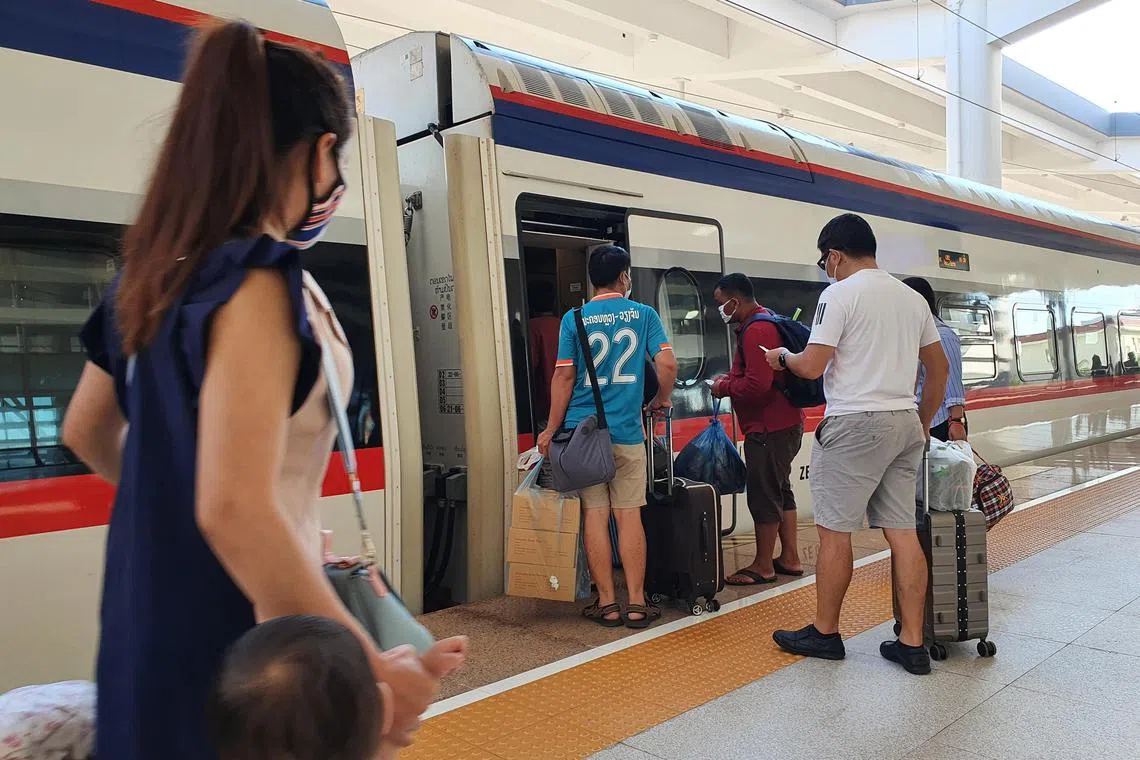For subscribers
Power Play
In the Asian connectivity race, China and rivals find it hard to connect
Despite the rhetoric, it has been tough to achieve real complementarity, whether it’s between development partners’ and host countries’ objectives, or between development partners themselves
Sign up now: Get ST's newsletters delivered to your inbox

Passengers boarding the Laos-China Railway train at Vientiane station.
PHOTO: ST FILE
Follow topic:
BANGKOK - On Dec 3, one year after the launch of the US$5.9 billion (S$7.99 billion) Laos-China Railway,
This omission by the Chinese majority-owned railway company underscored the kinds of hurdle faced by South-east Asian countries attempting to introduce some cohesion to projects often funded and controlled by a multitude of external parties. Chief among them is China, which, through its Belt and Road Initiative (BRI), has backed high-profile developments such as the Laos-China Railway, Cambodia’s Phnom Penh-Sihanoukville Expressway, and Indonesia’s Jakarta-Bandung high-speed railway.


